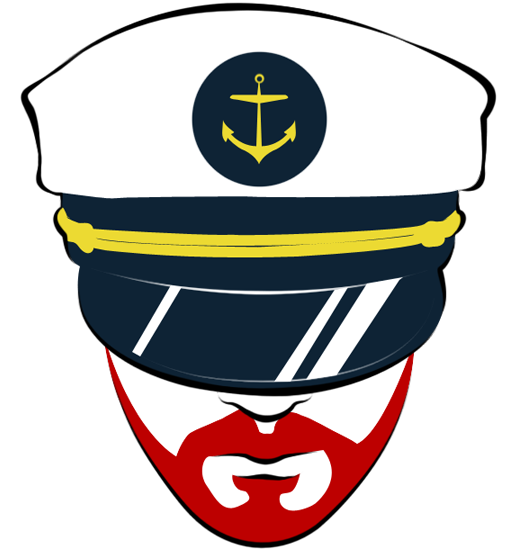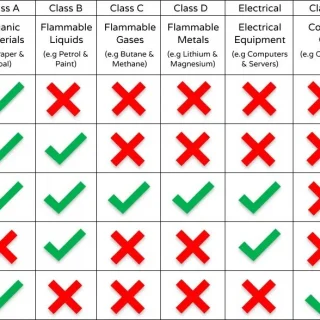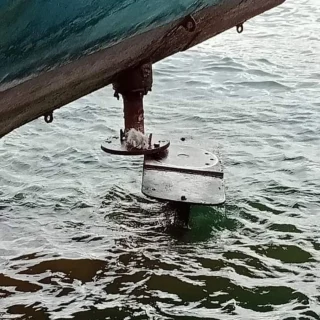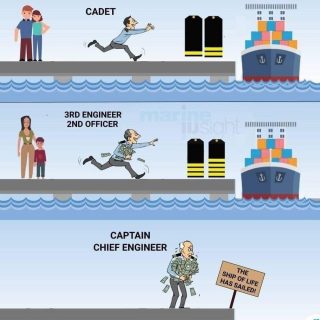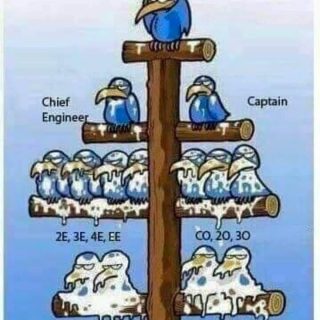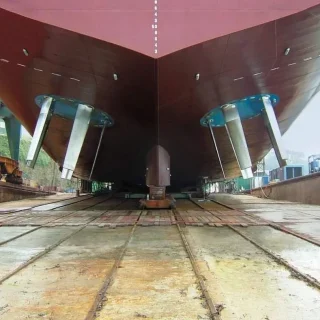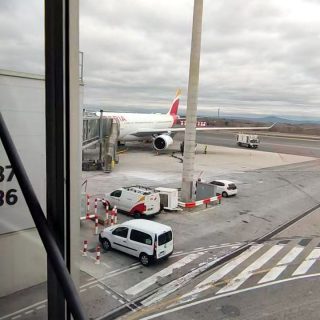Autonomous & Unmanned vessels – Are Machines Stealing Our Jobs?

Hej,
Zostałem poproszony o napisanie artykułu w języku angielskim do pewnego newslettera, którego na razie nazwy nie mogę podać. Miało to dotyczyć przyszłości w żegludze morskiej i zdecydowałem iż będą to statki autonomiczne i bezzałogowe. Jeżeli chcielibyście abym przetłumaczył ten artykuł na język polski to również to uczynię.
Introduction
Advanced IT technologies are developing day by day and in nearest future will enable ships to navigate remote-controlled or completely autonomous. These day’s vessels are still considered as a one of the most effective transportation method for any kind of cargo. Since last three years we faced a huge step in automation in transport industry. There are autonomous trucks, cars and even buses and we cannot forget about drones (UAV – Unmanned Aerial Vehicles). Finally this technology need come to us – seamen’s.
At this moment several projects are researching and testing unmanned vessels and they are planning to launch first sea going vessel in 2020.
In my article I would like to explain you the way how it is going now, what are the legal frameworks, further plans and finally what can bring to us – people who are the Maritime sector So go ahead and let’s read.
Autonomus and unmanned vessels
Unmanned vessel means that is always monitored by person on shore and under his own control.
Autonomous vessels mean that is capable to make independent decision, without interaction of a human operator.
Unmanned and Autonomous vessels can be categorized as follows:
- Unmanned Underwater Vessel (UUV)
- Unmanned Surface Vessel (USV),
- Autonomous Underwater Vessel (AUV),
- Marine Unmanned Surface Ship (MUSS)
- Marine Autonomous Surface Ship (MASS).
Last two should bring your attention because are types of the vessels which will change the future and they are under supervision of IMO.
Both of them (MUSS and MASS) will rely on many various sensors located everywhere on board. They will continuously send all data to mainframe server and then after preprocessing of date, results will be sent to engine, rudders, and other equipment and to the Ground Control Center. The vessel can be operated as well by human operator located ashore. He can interpret all data and transmit back to the ship. The operator can operate a few vessels in one time. He is guiding them and vessel software will perform all tasks from the operator. Off course for autonomous vessel is not requires a human operator. Vessel electronic system need only a destination port and ship will navigate itself without human interaction. The AI [artificial intelligence] will navigate the vessel autonomously.
Projects
There is a huge pressure in maritime industry for development of unmanned vessels and sophisticated system to control them from distance. After military research, successful tests it is time for commercial industry. At the moment there are many projects with unmanned and autonomous crafts for military purpose. They are mostly monitoring along the coast or submarine area but they are not SOLAS Vessels. There some scientific vessels and they can work under the water for pipes/cable inspections but they not carry any cargoes. All of them are available from years, but vessels what we will focus today are MASS and MUSS. There is still room for improvement and they have to beat some barrier before they can go for first sea passage without crew on board.
Main European Research Project “MUNIN” (Maritime Unmanned Navigation through Intelligence in Networks,) is a project financed by EU and German research institute “Fraunhofer Center for Maritime Logistics” and includes research institutes and private companies and universities from 8 countries. They are focus on development of the autonomous control systems on board of bulk carrier (75000 DWT) remotely controlled from a Ground Control Center for long voyages at speed of 16 knots. This exclude period of shallow waters because they believed that this part will be performed with the crew on board.
Project includes:
- Unmanned bridge
- Automated Lookout System
- Autonomous Engine Room
- Legal Feasibility Assessment
Other Projects:
- Norway unmanned 100TEU costal marine transportation system – “ReVolt”. To be powered by 3.000kWh battery to provide a range of 100 nautical miles at 6kts. DNV-GL says that in 30 years the vessel can save up to $34 million.
- VTT Technical Research Centre contain a numerous research projects for future concepts for cargo vessels and equipment which using this same intelligence technology as will be needed for unmanned vessels.
- RAVEN (Remote-controlled and Autonomous Vessels for European and National waters)
- CMI (Comité Maritime International)
- Companies like Wärtsilä, ABB and Rolls-Royce (The Advanced Autonomous Waterborne Applications Initiative) they are involved in their own developments of technologies
The Legal challenges of unmanned vessels
As long as unmanned and autonomous ships do not comply with IMO regulations, they are considered as unseaworthy and ineligible. Before any launching vessels, the legal framework has to be established for at least following regulations:
- United Nation Convention on the Law of the Sea (Article 94,98)
- Convention on the International Regulations for Preventing Collisions at Sea (COLREGs) (rules 2, 5)
- International Convention on Standards of Training, Certification and Watch-keeping for Seafarers (STCW) ( convention: Article III, Code: part IV, regulation 18
- The International Convention for the Safety of Life at Sea (SOLAS)
Maritime Safety Committee session 98 agreed that the IMO should be proactive on this and embark on the process of a regulatory scoping exercise, addressing different levels of automation. It was agreed to include this in the MSC’s agenda, with four sessions needed to complete the item. Work to be completed over four MSC sessions, through mid-2020.
A large part of maritime regulations and laws are dating back from 19th century. There need a lot of conversion to fit all regulations into new digital world.
The most significant changes for unmanned vessels will be required for navigational and manning regulations.
Risk FOR CREW
The safety of autonomous vessels is considered as ten times safer compared to regular shipping. All reports show that most of accidents happened due to fatigues issue or human error of manned vessels. From another hand all projects like MUNIN expect a lower risk of equipment breakdown due to improved maintenance scheme which will be covered from saves of crew costs.
Unmanned shipping will give different benefits for ship owners and shipping industry and etc. but these benefits are direct consequences of the absence of a crew on board.
- Ship-owners can save on crew costs, which can take up 30% to 60% of a ship operating costs,
- Reduced superstructure for accommodation the crew,
- Wages of vessel operator are estimated to be lower, because they do not incur the risks of a ‘maritime adventure’,
- Reducing fuel consumption due to lowering the weight of the vessels and using batteries as a power source,
- No accidents on board,
- More space for the cargo holds,
- All loading and discharging roles will take over a port operator.
However, it should be noted that all the savings in crew costs will be covered by expensive costs of investing in the new technologies.
IT TECHNOLOGIES ISSUES
All benefits and plans described above are just project and there is still long way fulfill them with current level of technology. I have worked many years as an IT Implementation Officer and my hobby is constructing Unmanned Aerial Vehicles FPV (First Person View) for drone racings and I see how development works in way of flying objects. Off course there is a different technology used for shipping but still there is some problem which can lower the reliability of vessels controlled remotely. There are some of them:
- One of the most important is latency (Period of time it takes for sending and receiving signals by satellites or other means). If latency value increase then this could have a huge influence of the safe of the vessel especially with dense traffic.
- Cyber-attacks and hijacking. There is a real threat for owners of the vessels as are valuable and attractive targets. If the control of the vessel will be taken by attackers then there is a danger for other vessels, ports or environment. It is possible to secure connection, create system which is protected as programmer can do best but this need to be under continuously control of IT department for updates and to keep virtual environment for testing before any updates or changes can be done on production server (located on the vessel) and this increase costs much more than crew costs on traditional vessel. We cannot forget also about internet piracy and money demands for the vessel in case of takeover.
- Reliability of equipment. Each of equipment on board can breakdown. We can use a duplication method and this will partially solve the problem but there is also a software issue which can occur with system failure like it is happening today. Not always the system can be restarted by itself, sometimes need be manually restarted and then the IT investigation and repair can take time and in this case the vessel need to be stopped or crew need to embark and takeover of the vessel.
- Loosing connection problems, especially with ocean passages due to bad weather or satellite system coverage. The vessel can proceed autonomously but the operator cannot be fully aware if the vessel is proceeding in proper direction or what is the status of machinery and other equipment or what is the most important – cargo.
There are more issues which come for the technology but these are in my opinion the most important as breakdown of equipment, cyber hijacking or loosing knowledge about position and status of the vessel and her cargo.
Conclusion
As my private opinion unmanned shipping is no longer a concept. They became very expensive on the beginning. There will be crew cost-saving effects but costs of IT maintenance will be higher than for crewing. Off course it increase safety of shipping and make world greener due to fuel consumption. This process still will take time and the amount of job will not be losses. There are 1,600,000 seafarers and there is all the time a demand for additional seafarers. Finally manned vessels will be replaced by unmanned vessels and will create other types of jobs: remote controllers, IT engineers, and maintenance crew. So, what the real effect will be on employment is still uncertain.
In regards to tanker shipping any changes will come after many years of first launching of unmanned vessel or will not come never due to value and danger of carried cargo.
